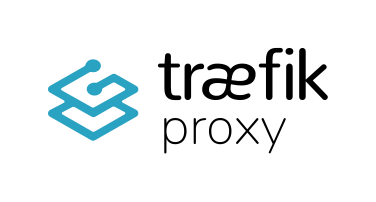

Overview

Traefik is a leading modern reverse proxy and load balancer that makes deploying microservices easy. Traefik integrates with your existing infrastructure components and configures itself automatically and dynamically.
Traefik is designed to be as simple as possible to operate, but capable of handling large, highly-complex deployments across a wide range of environments and protocols in public, private, and hybrid clouds. It also comes with a powerful set of middlewares that enhance its capabilities to include load balancing, API gateway, orchestrator ingress, as well as east-west service communication and more.
Run Traefik and let it do the work for you!
Highlights
- Load Balancing Control load to upstream services with flexible layer 4 and layer 7 routing and load balancing capabilities plus a large middlewares toolkit that enables dynamic scaling, zero-downtime blue-green, and canary deployments, mirroring, and more.
- API Gateway Use Traefik as a reverse proxy in front of API services and Traefik's expanding middlewares toolkit for offloading of cross-cutting concerns including authentication, rate limiting, and SSL termination. Additional API gateway capabilities and tooling are available for enterprises in Traefik Enterprise.
- Kubernetes Ingress Deploy Traefik as your Kubernetes Ingress Controller to bring Traefik's power, flexibility, and ease of use to your Kubernetes deployments as well as the rest of your network infrastructure.
Details
Features and programs
Financing for AWS Marketplace purchases

Pricing
Vendor refund policy
This is a placeholder value. Please update this value via the AWS Marketplace Management Portal.
Legal
Vendor terms and conditions
Content disclaimer
Delivery details
Traefik Proxy - Container
- Amazon EKS Anywhere
- Amazon ECS Anywhere
- Amazon EKS
- Amazon ECS
Container image
Containers are lightweight, portable execution environments that wrap server application software in a filesystem that includes everything it needs to run. Container applications run on supported container runtimes and orchestration services, such as Amazon Elastic Container Service (Amazon ECS) or Amazon Elastic Kubernetes Service (Amazon EKS). Both eliminate the need for you to install and operate your own container orchestration software by managing and scheduling containers on a scalable cluster of virtual machines.
Version release notes
Additional details
Usage instructions
https://doc.traefik.io/traefik/getting-started/install-traefik/
- Use the Official Docker Image Choose one of the official Docker images and run it with one sample configuration file: YAML or TOML
docker run -d -p 8080:8080 -p 80:80
-v $PWD/traefik.yml:/etc/traefik/traefik.yml traefik:v2.10
For more details, go to the Docker provider documentation
- Use the Helm Chart Traefik can be installed in Kubernetes using the Helm chart from https://github.com/traefik/traefik-helm-chart .
Ensure that the following requirements are met:
- Kubernetes 1.16+
- Helm version 3.9+ is installed
Add Traefik Labs chart repository to Helm: helm repo add traefik https://traefik.github.io/charts
You can update the chart repository by running: helm repo update
And install it with the helm command line: helm install traefik traefik/traefik
For additional installation options, please refer to the URL above.
Resources
Vendor resources
Support
Vendor support
Community support on
AWS infrastructure support
AWS Support is a one-on-one, fast-response support channel that is staffed 24x7x365 with experienced and technical support engineers. The service helps customers of all sizes and technical abilities to successfully utilize the products and features provided by Amazon Web Services.
Similar products




Customer reviews
Flexible, easy to use Load Balancer for everyone
Great for small and large projects
Though it has a steep learning curve, Traefik has powerful tools for routing among docker containers
Extensive proxy for all use cases!
The comprehensive documentation provided by Traefik is another major advantage. It’s well-organized, detailed, and covers virtually every possible use case. Whether you’re just getting started or diving deep into complex scenarios, the documentation is a reliable resource. It walks you through configurations, best practices, and even troubleshooting, ensuring that you can make the most out of Traefik's extensive capabilities.
Moreover, Traefik is incredibly flexible and can be used in almost any environment or use case. It supports a wide range of orchestrators like Kubernetes, Docker, and more. This versatility allows it to fit seamlessly into various infrastructures, from small-scale setups to large, complex systems. Whether you need to manage traffic for a single application or a sprawling microservices architecture, Traefik is equipped to meet the challenge.
Overall, Traefik’s extensive configuration options, robust documentation, and wide applicability make it an indispensable tool for anyone looking to efficiently manage their network traffic in a scalable and secure way.
However, once you get past the initial learning curve, the flexibility and control that Traefik offers are unmatched. The comprehensive documentation helps mitigate this complexity, guiding you through the setup process and helping you understand how to tailor Traefik to your specific needs. With time and experience, you'll likely find that the initial complexity is a small price to pay for the robust and customizable infrastructure that Traefik enables.
Efficient and Flexible Service Management with Traefik
For me, Traefik’s ability to dynamically discover and configure new services is a game-changer. It eliminates the need for manual configuration every time a new service is added, which not only saves time but also reduces the risk of configuration errors. Additionally, its built-in support for HTTPS with real signed certificates ensures that all my applications are secure without extra hassle.